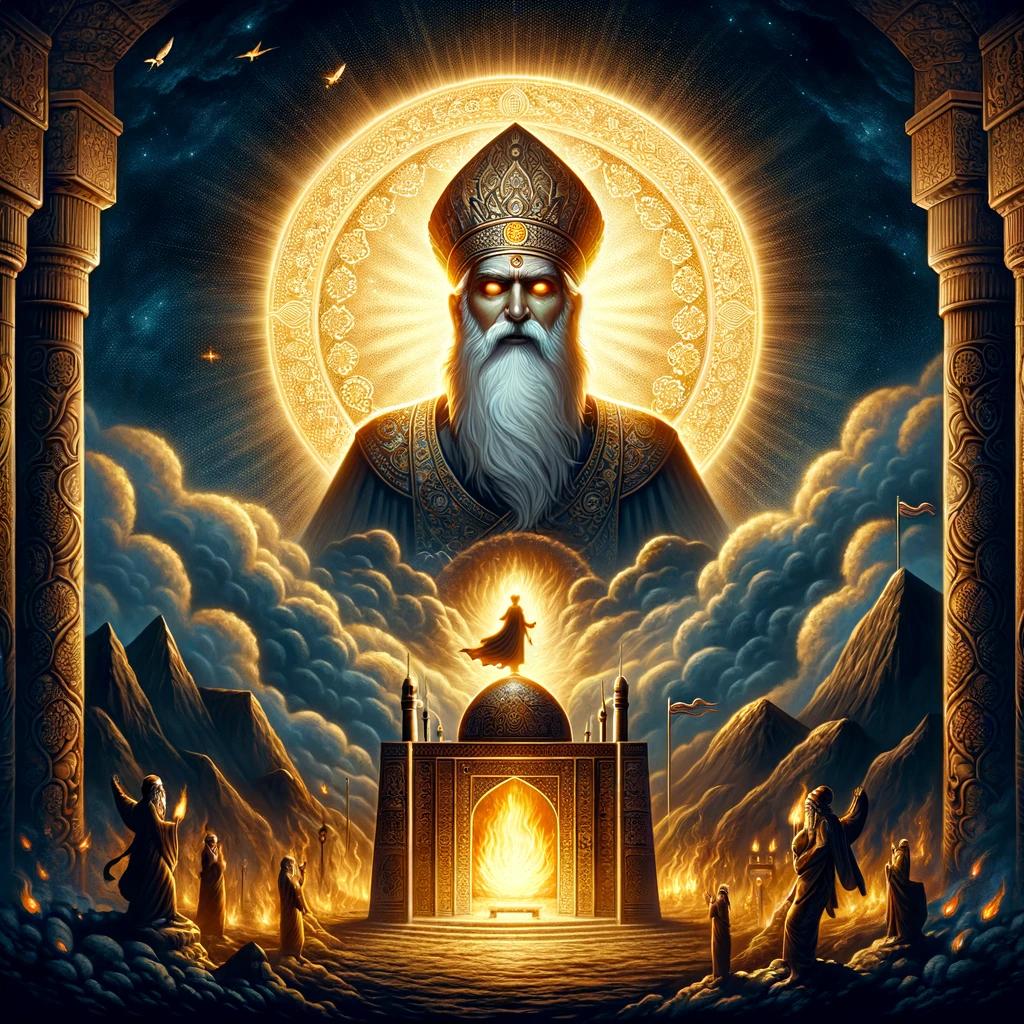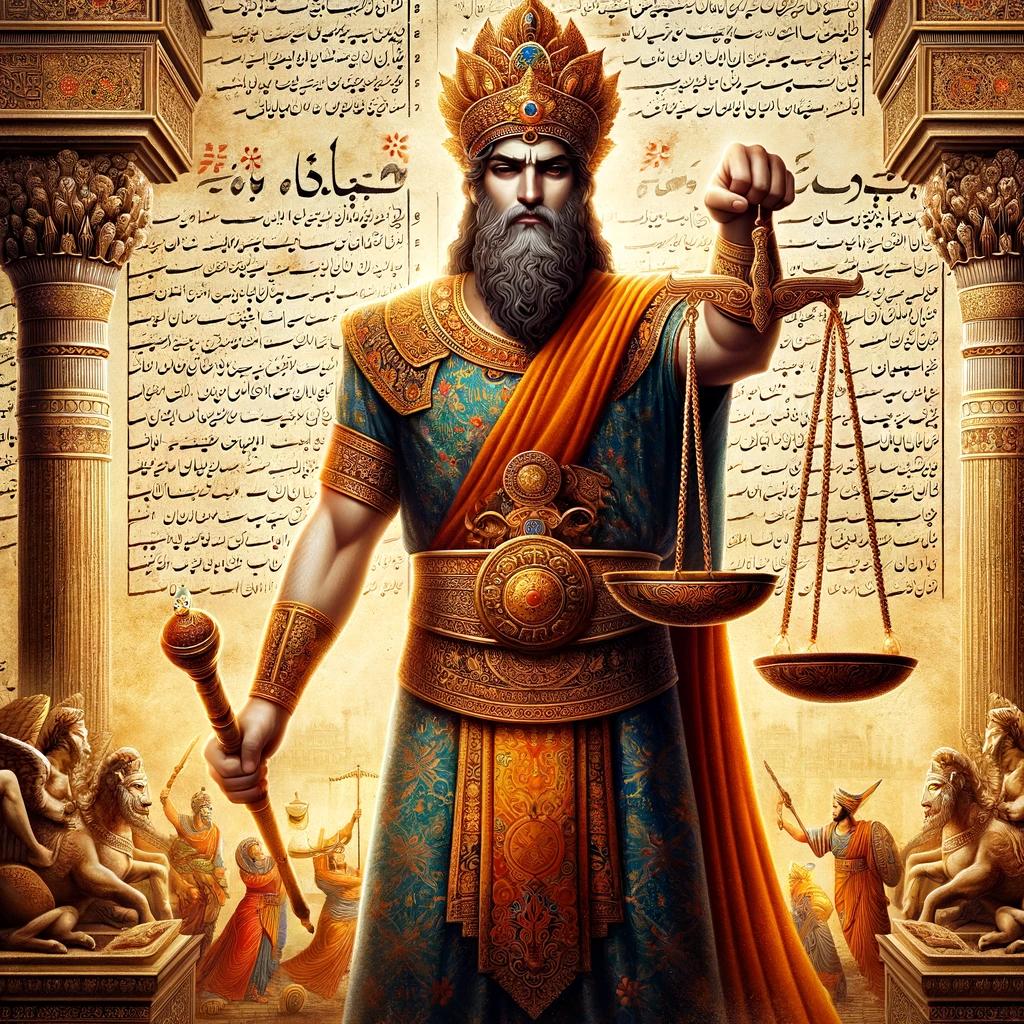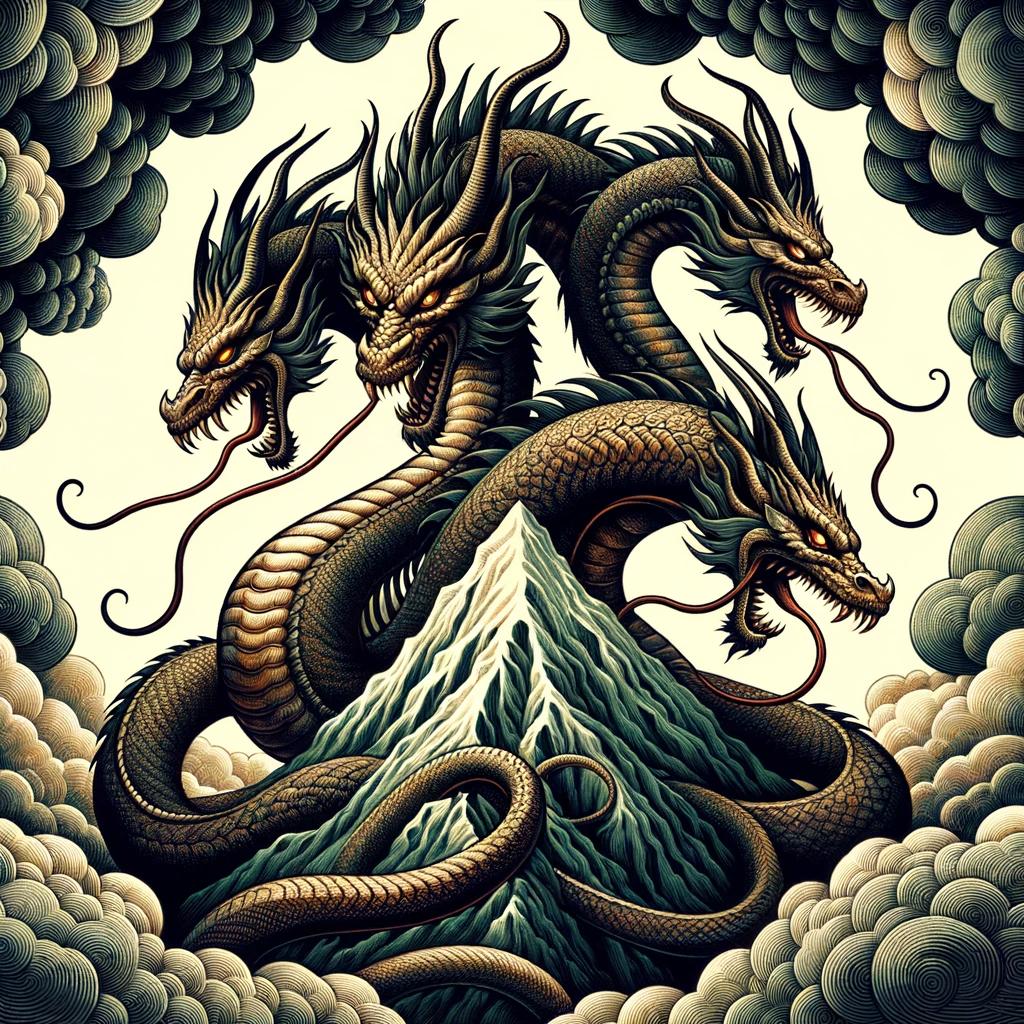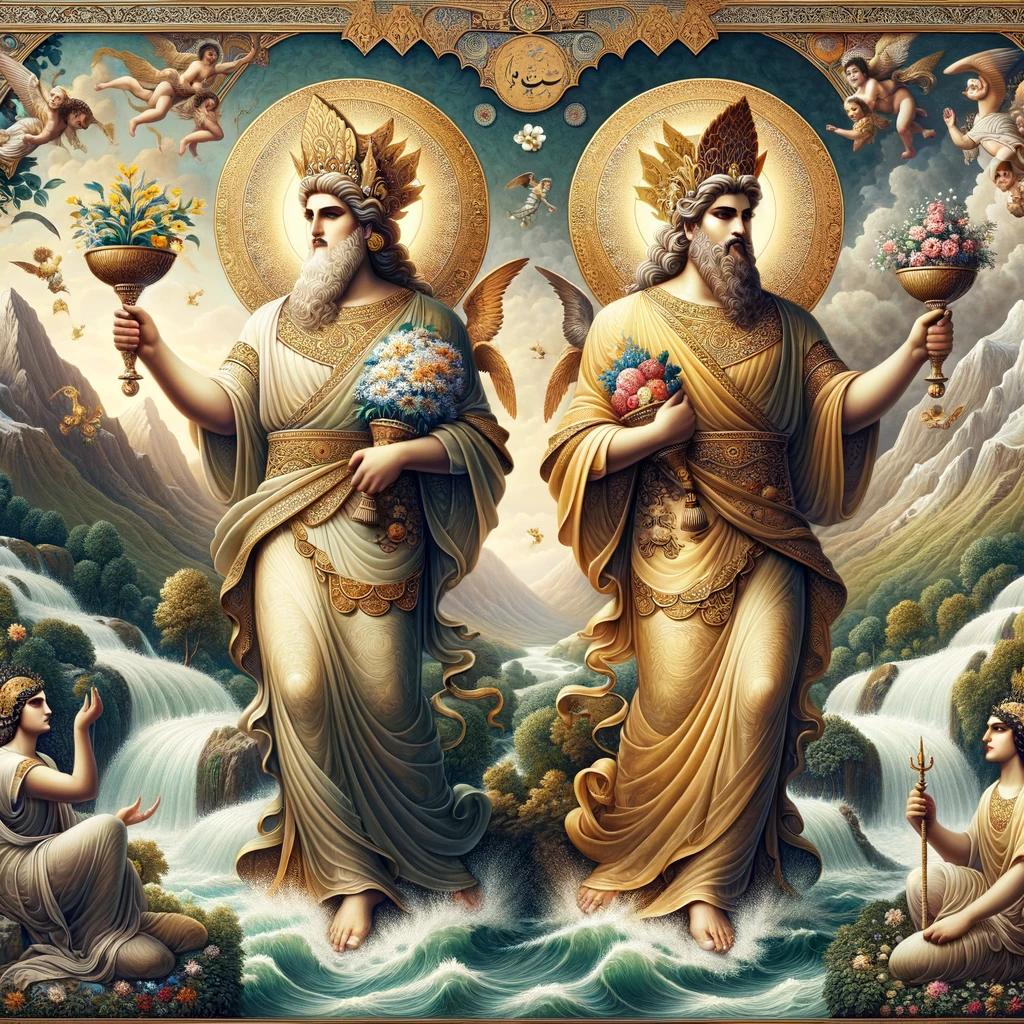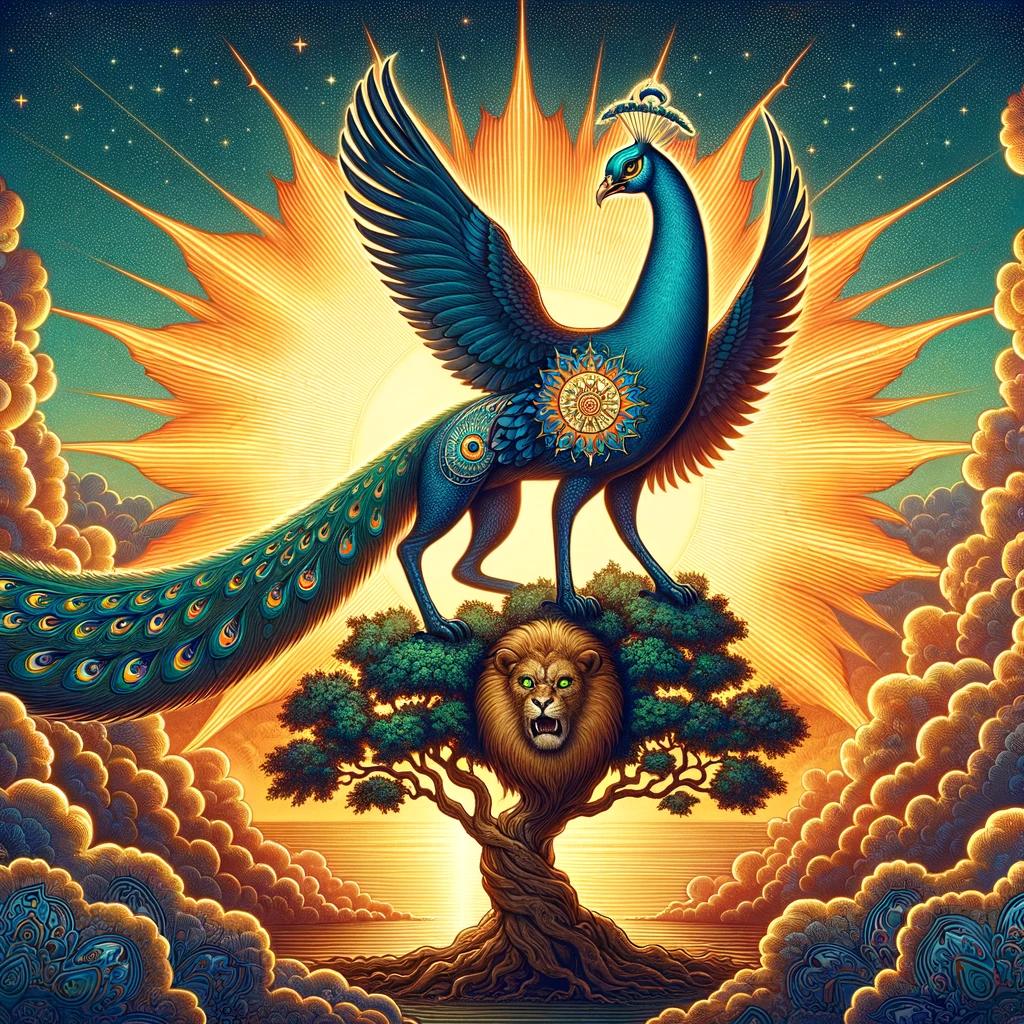Ahura Mazda: The Persian God of Light and Wisdom
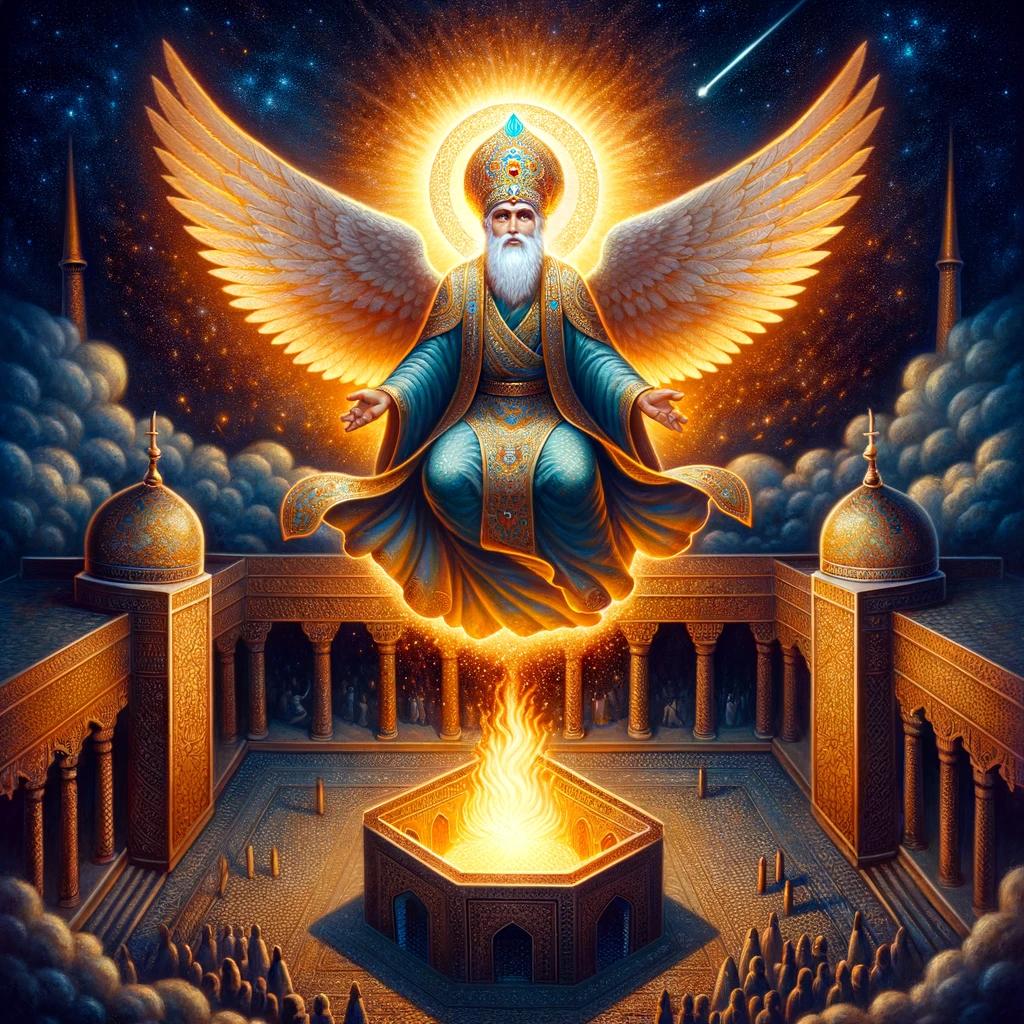
Zoroastrianism, an ancient religion practiced in Persia (now Iran), centers around Ahura Mazda, the supreme god. Ahura Mazda is revered as the creator of the universe and embodies qualities such as wisdom and goodness.
The belief in the duality of good and evil is central to Zoroastrianism, with Ahura Mazda engaged in a cosmic battle against the destructive spirit, Ahriman. Throughout history, representations of Ahura Mazda have varied, but his significance and influence have left a lasting impact on religious and cultural traditions.
Zoroastrianism, an ancient Persian religion, revolves around Ahura Mazda, the supreme god. Representing wisdom and goodness, Ahura Mazda has shaped the belief in the cosmic struggle between good and evil.
This battle against the destructive spirit, Ahriman, has influenced religious and cultural practices, leaving a significant legacy in various traditions.
The Origins of Zoroastrianism
Zoroastrianism, one of the oldest known religions, originated in ancient Persia, now modern-day Iran, around the 6th century BCE. It was founded by the prophet Zoroaster (or Zarathustra) and thrived during the Achaemenid Empire, becoming the dominant religion of the region.
The exact origins of Zoroastrianism are shrouded in mystery, but scholars believe that it emerged from a tradition of Indo-Iranian religious practices. Zoroaster, a religious reformer and visionary, played a crucial role in shaping the religion into its distinctive form.
According to Zoroastrian beliefs, Zoroaster received divine revelations from the supreme god, Ahura Mazda, who appointed him as his prophet and messenger. These revelations, recorded in the sacred texts called the Avesta, outlined the core teachings of the religion.
The early followers of Zoroastrianism were primarily nomadic tribes in the region, and the religion gradually gained popularity among the settled communities as well. It spread throughout the Persian Empire and continued to thrive even after the fall of the Achaemenid Empire.
Zoroastrianism had a profound influence on the culture, art, and literature of ancient Persia. It shaped the moral and ethical values of the society and played a significant role in shaping the Persian identity and worldview.
Today, Zoroastrianism is a minority religion with a small but dedicated community of followers, primarily concentrated in Iran and India. Despite its diminished numbers, the religion still holds tremendous cultural and historical significance.
The Beliefs and Teachings of Zoroastrianism
Zoroastrianism is a ancient Persian religion with core beliefs centered around Ahura Mazda, the supreme god. This faith system holds various teachings and doctrines that shape the understanding of the divine and the nature of the world.
Ahura Mazda as the Supreme God
Ahura Mazda is the central figure in Zoroastrianism, regarded as the ultimate deity. Seen as the embodiment of wisdom and goodness, Ahura Mazda is revered as the creator of the universe and all that is good in it.
The Dualistic Nature of Zoroastrianism
Zoroastrianism is characterized by its dualistic worldview, emphasizing the perpetual cosmic struggle between the forces of good and evil. This duality is manifested in the dichotomy between Ahura Mazda, representing light and goodness, and Angra Mainyu, the destructive spirit associated with darkness and evil.
Teachings of Ahura Mazda in Zoroastrianism
- Ahura Mazda embodies the principles of truth and righteousness.
- Devotion to Ahura Mazda involves leading a virtuous life and adhering to moral values.
- Ahura Mazda offers guidance and protection to those who follow the path of righteousness.
- Worship and prayers are directed toward Ahura Mazda as the source of divine wisdom and benevolence.
The Role of Free Will
- Zoroastrianism emphasizes the significance of individual choice and free will in determining one’s destiny.
- Humans are believed to have the responsibility to actively participate in the ongoing battle between good and evil.
- Through their actions, individuals can contribute to the triumph of Ahura Mazda and the defeat of Angra Mainyu.
These beliefs and teachings form the foundation of Zoroastrianism, shaping the moral framework and guiding the spiritual practices of its followers.
The Role of Ahura Mazda in Creation
The belief in Ahura Mazda as the creator of the universe holds a central place in Zoroastrianism. This section explores the significance of Ahura Mazda as the divine entity responsible for bringing the world into existence, including the mythology surrounding this concept.
Ahura Mazda as the Creator of the Universe
In Zoroastrianism, Ahura Mazda is revered as the supreme deity and the ultimate creator. He is believed to have brought forth all that is good and pure in the universe. Ahura Mazda’s creative power is seen in the intricate design of the world, the celestial bodies, and the natural phenomena that exist.
This belief in Ahura Mazda’s role as the creator highlights his wisdom, goodness, and generosity. It underscores the fundamental concept that everything good in the world comes from his divine hand.
The Creation Myth in Zoroastrianism
Zoroastrianism includes a rich creation mythology that sheds light on the origin and purpose of the universe. According to this mythology, Ahura Mazda fashioned the world out of his own substance, representing his divine essence.
A central element of this creation myth is the concept of Asha, which is the divine order and truth embodied by Ahura Mazda. It is through this cosmic force that Ahura Mazda brings harmony, balance, and righteousness to the world.
The Zoroastrian creation myth also emphasizes the ongoing struggle between Ahura Mazda and Angra Mainyu, the embodiment of evil. This eternal battle influences the course of creation and the trajectory of human existence.
Key Aspects of Zoroastrian Creation Myth:
- Ahura Mazda as the divine creator
- Asha as the embodiment of divine order
- The ongoing struggle between Ahura Mazda and Angra Mainyu
The role of Ahura Mazda in creation, as depicted in Zoroastrianism, signifies the divinity’s immense power, wisdom, and benevolence.
It highlights the eternal battle between good and evil, providing a framework for understanding the balance of forces in the world.
The Battle between Ahura Mazda and Ahriman
The ancient religion of Zoroastrianism presents a cosmic struggle between the forces of good and evil, epitomized by the ongoing battle between Ahura Mazda and Ahriman. This battle is central to the belief system and teachings of Zoroastrianism, symbolizing the eternal conflict between light and darkness, truth and falsehood, and virtue and vice.
It underscores the moral choices that individuals confront in their daily lives, as they align themselves with either the divine Ahura Mazda or the malevolent Ahriman.
Understanding Ahriman, the Spirit of Evil
In Zoroastrianism, Ahriman represents the embodiment of evil, the antithesis to Ahura Mazda’s benevolent nature.
He is the source of all darkness, ignorance, and moral corruption in the world. Ahriman is depicted as a powerful, destructive force, constantly seeking to undermine Ahura Mazda’s creation and sow chaos.
Zoroastrians understand the presence of Ahriman as a necessary part of the cosmic order, a catalyst for human beings to exercise their free will and choose the path of good.
The Cosmic Battle of Good vs.
Evil
The battle between Ahura Mazda and Ahriman is not limited to the celestial realms, but extends to the earthly realm as well. Zoroastrians believe that this cosmic struggle plays out in every aspect of existence, including the individual choices and actions of human beings.
It is through moral agency that individuals actively participate in the ongoing battle between good and evil, aligning themselves either with Ahura Mazda’s vision of righteousness or succumbing to the temptations of Ahriman’s destructive influence.
The call to combat evil and uphold goodness is a recurring theme in Zoroastrian texts, emphasizing the responsibility individuals bear in helping Ahura Mazda overcome Ahriman’s nefarious intentions. By making virtuous choices, living morally upright lives, and aligning themselves with Ahura Mazda’s divine teachings, believers contribute to the ultimate victory of good over evil.
Symbols and Representations of Ahura Mazda
Ahura Mazda, the supreme god in Zoroastrianism, is associated with various symbols and depictions that convey deeper meanings and insights into his divine nature. These symbols and representations not only serve as visual representations of Ahura Mazda but also carry significant cultural and spiritual significance within the followers of Zoroastrianism.
The Faravahar Symbol and its Meaning
One of the most widely recognized symbols associated with Ahura Mazda is the Faravahar, an ancient Persian icon that symbolizes the eternal nature of the human soul and its journey towards spiritual enlightenment.
The Faravahar consists of several elements that depict the dualistic nature of Zoroastrianism.
- The central figure of the Faravahar is a winged circle, representing eternity and the cyclical nature of life.
- Within the circle, there is a depiction of a human figure, symbolizing the spiritual essence and the choices individuals make throughout their lives.
- The human figure holds a ring, representing the eternal bond between the physical and spiritual realms.
- Two wings protrude from the sides of the circle, signifying the potential for spiritual growth and ascension.
The Faravahar symbolizes the journey towards righteousness and the ultimate goal of aligning oneself with the divine presence of Ahura Mazda.
Depictions of Ahura Mazda in Art and Architecture
Ahura Mazda is often portrayed in various forms of art and architecture, reflecting the cultural and historical contexts in which Zoroastrianism thrived. These depictions highlight different aspects of Ahura Mazda’s divine nature and serve as a source of inspiration for worshippers.
In ancient Persian art, Ahura Mazda is depicted as a majestic figure wearing a crown and radiating light, symbolizing his status as the supreme god and the source of ultimate wisdom and enlightenment.
In architectural structures such as temples and fire altars, images of Ahura Mazda are often intricately carved or painted, emphasizing his central role in Zoroastrian worship and the religious significance attached to his presence.
Throughout history, various representations of Ahura Mazda have evolved, influenced by different artistic styles and cultural influences. These depictions not only capture the reverence and devotion towards Ahura Mazda but also serve as a means to connect with the divine presence in the pursuit of spiritual enlightenment.
Rituals and Practices in Zoroastrian Worship
Zoroastrian worship is characterized by a rich tapestry of rituals and practices that play a central role in the religious life of its followers. These rituals serve as a means of connecting with the divine and reinforcing the teachings and beliefs of the faith.
The Role of Fire in Zoroastrian Rituals
Fire holds a profound significance in Zoroastrian worship, symbolizing purity and divine presence. The consecrated fire, known as the Atash, is considered a representation of Ahura Mazda’s divine light and wisdom.
It is believed to embody the spirit of the creator and is regarded as a sacred entity.
Zoroastrian rituals involving fire, known as the Yasht, are performed regularly in fire temples or at home altars.
Devotees offer prayers, recite sacred texts, and make offerings to the sacred fire. The fire acts as a conduit, carrying prayers and purifying intentions to Ahura Mazda.
The Importance of the Yasna Ceremony
The Yasna ceremony is one of the most significant and elaborate rituals in Zoroastrian worship.
It is a central act of devotion and gratitude towards Ahura Mazda, involving the recitation of the Yasna texts, which comprise hymns and prayers dedicated to the divine.
During the Yasna ceremony, a priest, known as a Mobed, leads the congregation in the recitation of sacred verses while performing ritualistic actions.
The ceremony is accompanied by offerings of fruits, flowers, and other symbolic items, expressing reverence and gratitude to Ahura Mazda.
Through the Yasna ceremony, Zoroastrians seek to strengthen their spiritual connection with Ahura Mazda, reaffirm their faith, and seek blessings for a prosperous and virtuous life.
- The Yasna ceremony is an immersive experience that involves all the senses, with the fragrance of incense, the visual presence of sacred symbols, and the rhythmic recitation of prayers.
- It serves as a communal gathering, fostering a sense of unity and collective devotion among Zoroastrians.
- The Yasna ceremony is usually conducted in Avestan, the ancient language of the Zoroastrian scriptures, and its recitation requires years of dedicated study and training.
- Participating in the Yasna ceremony is not only a religious duty but also a way of affirming one’s cultural identity and preserving the traditions of Zoroastrianism.
Overall, the rituals and practices in Zoroastrian worship serve as a means of connecting with Ahura Mazda, reinforcing faith, and seeking spiritual guidance.
Through fire veneration and the elaborate Yasna ceremony, followers express their devotion, gratitude, and aspiration for a righteous existence.
Influence of Zoroastrianism and Ahura Mazda
Zoroastrianism and the worship of Ahura Mazda have had a significant impact on various religions, philosophies, and cultural practices throughout history.
Influence on Other Religions and Philosophies
1. Ahura Mazda and Zoroastrianism influenced the development of the concept of monotheism, particularly in the Abrahamic religions of Judaism, Christianity, and Islam. The belief in a single, supreme god can be traced back to Zoroastrian teachings.
2. The idea of a cosmic battle between good and evil, represented by Ahura Mazda and Angra Mainyu, has influenced the dualistic aspects present in religions such as Gnosticism and Manichaeism.
3. The notion of judgment and the afterlife, including the concept of heaven and hell, can be seen as a result of Zoroastrian beliefs on the individual’s moral choices and their ultimate consequences.
Impact on Modern Society and Cultural Heritage
1. Zoroastrianism’s emphasis on morality, righteousness, and ethical living has left a lasting impact on Persian culture throughout history, shaping societal values and norms.
2. The influence of Ahura Mazda can be observed in various forms of art, poetry, and literature, with many Persian classical works containing references to the god and Zoroastrian teachings.
3. Zoroastrian communities and their traditions continue to exist today, particularly among the Parsis in India and the Zoroastrians in Iran. Their adherence to Zoroastrianism serves as a testament to the lasting cultural significance of Ahura Mazda.
- Zoroastrianism’s teachings on purity and fire worship have influenced architectural designs, such as the iconic Fire Temples seen in Iran.
- The celebration of Nowruz (New Year) within Zoroastrianism has become an integral part of Persian cultural heritage, symbolizing rebirth and renewal.
- The ethical principles taught by Ahura Mazda, such as honesty, justice, and charity, have left a lasting impact on the moral fabric of society, promoting virtuous behavior and social harmony.
The lasting influence of Zoroastrianism and the worship of Ahura Mazda extend beyond religious and cultural boundaries, shaping the beliefs, values, and practices of civilizations throughout history.
.

